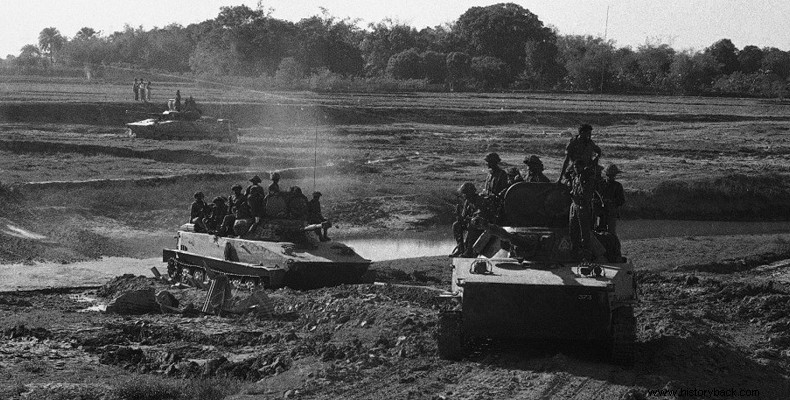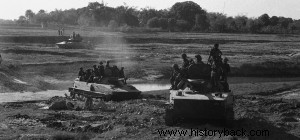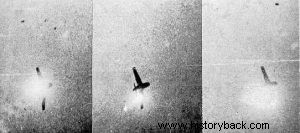
The Indo-Pakistani War of 1971 officially began on 3 December with the independence of Bangladesh (then East Pakistan) being awarded. India had every interest in intensifying disruptive moves to weaken its main adversary.
However, the conflicts started much earlier than the official outbreak of the war, as early as October 1971 with serious border incidents. The first major scale conflict, however, took place on November 20-21 in Galibur. There an Indian battalion, reinforced with a salvo of 14 light tanks, faced a Pakistani brigade.
Galibur is located in the Boira enclave in present-day Bangladesh. The enclave was used by the Pakistanis as a base for artillery attacks against the Indians. The latter, in order to prevent the enclave from being used as a Pakistani base, decided to occupy it.
The operation was undertaken by the 14th Punjab (Battalion) reinforced by Company C of the 45th Cavalry Regiment, equipped with 14 Soviet-made PT-76 light amphibious tanks. The Indians would attack as suddenly as possible.
On the evening of 20 November a patrol of the 14th Punjab was sent forward to reconnoitre the area. But the Indian patrol ran into a Pakistani one and thus the possibility of surprise was lost for the Indians. After this the Indian chief Lt.Col Singh ordered his battalion to advance.
The battle begins
It was early morning (03.00) on November 21 when the Indians started. The four companies of the battalion, supported by the light tanks, occupied the first positions of the Pakistanis after a fierce battle. Immediately thereafter Singh ordered his men to deploy defensively in the captured positions awaiting the Pakistani counterattack at first light.
As Singh expected the Pakistanis mobilized an entire brigade of their own, the 107th Infantry Brigade (TX/PZ) which they reinforced with the 3rd Independent Tank Army with M-24 Chafee light tanks. An Indian patrol under Capt. Gill spotted the arrival of Pakistani reinforcements and informed Singh.
The Indian lieutenant colonel left behind his infantry reinforced with recoilless guns and ordered Company C to move forward and ambush the incoming opponents. As day dawned, thick fog covered the area. The Indians took advantage of the fact and opened fire on their opponents who could not locate where they were being fired from due to fog and incapacity.
Pakistani tank industry has literally disappeared. Of her tanks, 11 were destroyed and three were captured in operational condition. The Indians lost 6, or according to other sources, 8 tanks, including that of Company C commander Major Narang.
The Pakistanis, however, continued the attacks, reaching a distance of up to 25m. from Indian posts. But they were repulsed all the times they tried to break them up. Eventually the Pakistanis withdrew leaving behind at least 180 dead. The wounded were much more. The Indians had an unknown number of dead and about 40 wounded.
The dogfight
During the attacks by the Pakistani 107th Air Force/PZ the Pakistani Air Force also intervened striking Indian positions with F-86 Saber fighters. At 14.30 three Pakistani F-86s appeared to launch another attack. But then three Indian Gnat fighters appeared.
The Indian formation was led by Lt. Gen. Roy Andrew Massey. Pakistani pilots did not see the adversaries and the Indians attacked them when they attempted to gain altitude after the dive they had executed to hit the Indian ground forces.
The Pakistani Sabers came under heavy fire from the 20 mm guns. of British-built small Indian fighters. Two Pakistani aircraft were immediately shot down. The third was seriously damaged but managed to return, albeit on fire, to its base. Soldiers on both sides watched the dogfight, the outcome of which certainly boosted the morale of the Indians and dented that of the Pakistanis. It was a great ground and air victory for the Indians.

Indian soldiers on PT 76 light tanks.

Pakistani Sabers are shot down.
